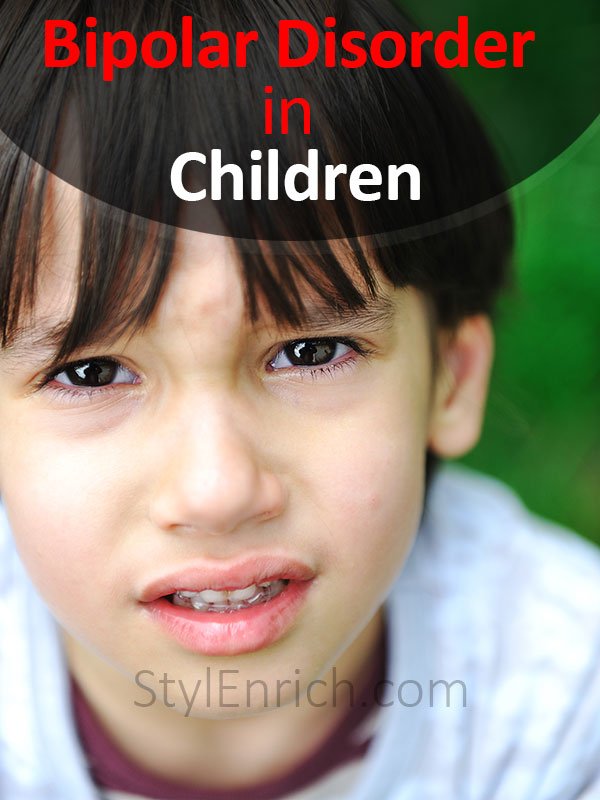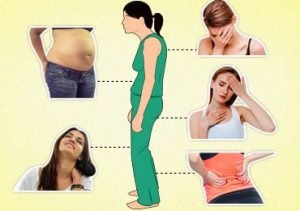Bipolar Disorder, also known as Manic Depression, is a kind of mental illness. A patient suffering from this issue finds himself suffering from severe mood swings episodes. The mood swing ranges from effervescent delirium to suicidal depressions.
In the year 2012, The World Health Organisation stated that Bipolar Disorder is the 6th largest cause of disability in the world. (Cristina Colombo, 2012)
What is Bipolar Disorder?

It is easier to understand the disease if you understand the meaning of the word Bipolar, which means two poles. Therefore, the words Bipolar Disorder implies a person suffering from frequent oscillations between the two extreme moods of ecstatic happiness to extended depression.
This psychological disorder was first formally recognized as a mental illness close to 100 years ago by Emil Kraepelin. However, the description of patients suffering from symptoms similar to this disease has existed since 200 A.D. (Roxanne Dryden-Edwards).
The patient suffering from this disorder has categorically two states of mood :
1. Happy : this state can be manic or hypo-manic
2. Sad : this state is a usually varying degree of depression
1. Manic State
The mood swing of a Bipolar individual to egregious, elated, unreasonably happy or ecstatic is called Manic State. The patient feels uncommonly high mood lifts leading to an unnaturally optimistic, reckless, as well as excessively impatient and impulsive.
An individual in a manic state usually loses all sense of caution or fear and feels euphoric about everything. This state lasts for about 1 week in a single episode of Bipolar Disorder.
Did you know about Narcissistic Personality Disorder (NPD)?
2. Hypomanic State
The mood swing of a Bipolar patient ends to be towards a general sense of happiness, unusual contentment, an undue feeling of well-being, etc. This state is similar to Manic State; however, it is less intense in the same feelings. This state, like the Manic State, tends to last about 1 week in a single episode of Bipolar Disorder.
3. Depression State
The mood swing of a Bipolar Patient in this episode of the Bipolar Disorder tends towards feeling depressed, sad, unwanted, sluggish, anxious, and/or suicidal. The depression period of a single episode tends to last about 3 weeks. The severity of the period tends to be influenced by the severity of the manic or hypomanic period.
In other words, Bigger the “Rise” – Greater the “Fall”.
Any episode of a Bipolar Disorder contains either manic or hypomanic state followed by the depression state. Thus, the patient tends to show feelings of both extreme happiness and great sadness in any episode, while each episode lasts for weeks together.
How to identify Bipolar Disorder?
A person/ individual/ patient under the effect of this Bipolar Disorder or manic depression usually displays one or a combination of the following pattern:
- Unusual shifts in mood
- Display of a period of disassociation from reality
- Decreased ability to focus on day-to-day tasks
- Diminished capacity to cope with the reality of their life
- Low energy levels
- Reduced sleep time or disturbed sleep-cycle not affecting energy levels
- Unaccountable sense of happiness
- Increased elation levels of mood
- Unusual impulsiveness
- Decreasing health status
Who Can Get Bipolar Disorder?
This mental disorder can be found in any individual; it has been discovered in the active or latent stages in individuals at any period in their life. There exists no age, gender, or creed barring for the occurrence of this disorder in a patient. Bipolar Disorder in men, women, teenagers, and children can be found all over the globe with relatively similar frequency.
It is estimated that close to a fifth of the world’s population suffering from mental illness is observed to have varying degrees of Bipolar Disorder.
1. Bipolar Disorder in Men
This Manic Depression state is can be identified by the manifestation of the following behaviors:
- Increased sexual activity
- Decreased sleep
- Incapability to have a normal social life
- Substance/drug abuse
- Symptoms of suicidal tendency
- Fascination with death
- Lack of fear of consequence
- Impulsiveness
- Excessive expenditure
- Anxiety or worry
Manic Depression in men tends to have a higher rate of suicide or self-harm during the depression stage of this mental illness. During the manic stage of this Bipolar Disorder, men tend to have a little bit of the “God Complex”; thereby, making them reckless in terms of expenditure, physical feats as well as sexual proclivity.
2. Bipolar Disorder in Women
Women tend to have a hypomanic tendency while experiencing Manic Depression. Therefore, it is sometimes not easy to detect the symptoms that could allocate a woman’s behavior towards this disease. Some behavioral changes that can help the detection of this mental disorder in women are:
- Changes in the sleep cycle as well as the duration
- Excessive sadness
- Restlessness
- Irritability
- Excessive joviality
- Anxiety
- Increased sexual activity
3. Bipolar Disorder in Teenagers/ teens
Although the disease is not generally manifested in people below the age of 20, there has been an increase in the recognition of Bipolar Disorder episodes in teenagers as well as children. The normal hormonal behavior of teenagers and Manic Depression related behavior patterns tend to be similar. However, the following list of behavior pattern can help a parent/ teacher/ mental health professional identify the manic stage of the this disorder :
- Being excessively happy sometimes even without due reason
- Acting-out or misbehavior is common in teenage, however, extreme misbehavior may be a cause of concern
- Risky behavioral tendency
- Lack of concern for the consequence of actions or words
- Substance or drug abuse
- Excessive short temper triggers
- Difficulty in focusing on work/ studies/ conversation
- Increased interest in sexual activity
- Overly active sex drive
- Not sleeping sufficiently; however, not showing fatigue or tiredness
While experience the depression stage in the Bipolar Disorder, a teenager can be expected to show the following behaviors:
- anxiety
- suicidal tendency
- drug or substance abuse
- sluggishness
- excessive sadness
- tendency to weep easily
4. Bipolar Disorder in Children

All children behave in different manners in the same situation even if given the same stimuli. Each child has different physical, mental as well as emotional growth patterns. Therefore, similar to teenagers, Bipolar Disorder is difficult to identify in children.
Since children are usually active in nature, some are even hyperactive in nature, it is impossible to recognize any manic tendency or elated mood swings. However, there are a few patterns of depression-related behavior, which if observed with regularity in a child, can be used to indicate a tendency towards Bipolar Disease or Manic Depression.
The depression stage of Bipolar Disorder in children can be identified by the follows:
- Excessive sadness
- Unusual sleep cycles, i.e. too much or too little sleep
- Low energy thresholds
- Low activity thresholds
- Lesser interest in studies
- Repeated obsession with death
Types of Bipolar Disorder
Let’s understand the different types of Bipolar Disorders:
1. Bipolar I Disorder
This is a type of Bipolar Disorders in which the patient experiences a minimum one episode in the year. This implies that an individual who suffers from the disease will have one manic period that may be preceded by a hypomanic period or followed by one depression period. Studies have revealed that some cases show a tendency to suffer a break from reality after the manic period.
2. Bipolar II Disorder
This is a type of Bipolar Disorders in which the patient experiences one hypomanic episode followed by a period of depression. This variant of the disease does not display manic tendency and hence it is more difficult to diagnose. Patients suffering from this type of the Bipolar Disorder do not suffer from psychosis, i.e. a break from reality, episode.
3. Cyclothymic Disorder / Cyclothymia
This variant of the Bipolar Disorders displays numerous episodes of hypomania along with frequent periods of low-level depression episodes. This mood pattern should exist for approximately 2 years in adults and 1 year in children.
Diagnosis, Symptoms, and Treatment of Bipolar Disease
How to Diagnose Bipolar Disorder?
Usually, a doctor or general practitioner carries out a series of blood and urine tests along with a set of diagnostic examinations to determine Bipolar Disorder. On observing the tendency towards Manic Depression, s/he refers the case to a mental health professional.
The patient’s family, close friends, colleagues and general physician or medical practitioner can contribute to the diagnosis by stating the observed behavior as well as changes in the pattern of behavior to the mental health practitioner. This helps a mental health professional to determine the type of mental illness that is being observed in the patient as well as the sub-type of the mental disorder.
For any individual to have their behavior categorized as Bipolar Disorder, they must meet pre-ordained medical criteria that specify mania, hypomania, and/ or depression. The specifics related to presence, sequence as well as period of manic, hypomania, or depression states are helpful to determine the classification of Bipolar Disorder in the patient.
What are the Symptoms of Bipolar Disorder?
The typical symptoms of Bipolar Disorder are:
- Intensely emotional periods
- Unusual behavior patterns
- Disturbed sleep cycles
- Unstable energy levels
- Uncontrolled anxiety management
- Frequently irritable mood
- Drug abuse
- Self-medication attempts
- Substance abuse
- Lack of focus or concentration
- Inability to have a meaningful social relationship
- Unusual sexual awareness
- Impulsive behavior pattern
These are those symptoms that state the most noticeable changes in the personality of an individual. However, the progression and manifestation of the disease changes with respect to the patient and their usual mood as well as behavior.
Let’s take a look at symptoms specific to the manic as well as depression mood swing :
| Manic | Depression |
|---|---|
| Rapidly changing thoughts leading | Feeling extremely unhappy or sad |
| Feeling of extreme happiness | Lack of energy |
| Lack of fear of consequence | Lack of interest in any activity |
| Inability to focus | Avoidance of social interaction |
| Substance Abuse tendency | Feeling of sluggishness |
| Impulsive behavior | Encouraged by thoughts of death and suicide |
| Increased irritability, excitability, etc. | Increased anxiety, worry, etc. |
| Increased interest in sex | Low self-worth |
| Lesser sleep but no feeling of fatigue | Low interest in people related interactions |
What is the Treatment of Bipolar Disease?
Since Bipolar Disorder is a mental illness, its treatment focuses on:
- Regular psychotherapy by the means of interviews or sessions with a trained mental health professional.
- Prescribed Antidepressants, although they have been recently found to be of little help to patients experiencing this Disorder.
- Prescribed Antipsychotics, mainly composed of Lithium, they are given to level out the mood swings experienced during the manic or hypomanic periods of Bipolar Disorder episodes. It has been identified that Lithium-based drugs help patients to be able to perform everyday tasks without feeling drastic changes in mood or personality traits.
- Cognitive Behavior Therapy helps in monitoring the drug use as well as mood swings of a patient. It may also help identify the triggers of an episode of Bipolar Disorder.
- Hospitalization in terms of extreme cases that may lead to self-harm is exercised on the discretion of the doctors.
- Electroconvulsive Therapy, or Electric shocks, to restart a regular neural process is another example of extreme treatments for this issue.
Frequently Asked Questions About Bipolar Disease
1. What are the Causes of Bipolar Disorder?
Ans. Although there are no proven causes, there is strong evidence supporting the following causes being associated with any individual suffering from this illness:
1. Psychological Causes
- Abuse or trauma suffered in childhood
- Extreme physical trauma
- loss of a near and dear person unexpectedly or violently
2. Neural Causes
- Unbalanced brain development
- An injury suffered to the brain
3. Biological Causes
- Hormonal imbalances
- Presence of certain gene pair leading to susceptibility to the disorder is under investigation
- Presence of certain biological traits have been linked to the presence of Bipolar Disorder, however, the results are inconclusive as of now
4. Drug/Substance Abuse related Causes
- Excessive self-medication without considering the resulting neural damage
- Use of illegal recreational drug leading to neural damage
2. What other disease show similar symptoms to that of Bipolar Disorder?
Ans. Most mental illnesses related to depression tend to have overlapping symptoms. Therefore, it is difficult for a clear diagnosis of Bipolar Disorder by a mental health professional over a short time period. The following mental diseases show similar traits and are often confused for Bipolar Disorder –
- Post-Traumatic Stress Disorder or PTSD
- Attention-Deficit Hyperactivity Disorder (ADHD) (commonly found in children)
- Anxiety Disorder
- Drug / Substance Abuse
- Schizophrenia
- Multiple Personality Disorder
3. Is the Bipolar Disorder curable?
Ans. Since Bipolar Disorder is a mental illness with no conclusively identifiable reasons for its occurrence, its treatment leans towards the management of the disease and its symptoms rather than its cure. Currently, there is no properly proven cure for Bipolar Disorder.
The treatment of Bipolar Disorder tends towards managing the patient’s mood swings as well as mental, physical as well as behavioral stress experienced by the patient. The following treatments or a combination of them have been used in relation to Bipolar Disorder
- Antidepressants
- Antipsychotics
- Electroconvulsive Therapy
- Psychotherapy
- Cognitive Behavior Therapy, etc.
4. Can Bipolar Disorder be observed in children?
Ans. Yes. Since children tend to be hyperactive or moody with frequent changes in their behavior pattern, it is difficult to identify Bipolar Disorder in children
However, monitoring of certain moods like irritability, undue degree of anger, lackluster behavior, and disturbed sleep pattern (either too much or too little), etc. can help a certified mental health professional to diagnose the disease in children.
An estimated 1.1 million children or adolescents with depression may have early onset of Bipolar Disorder(The Recovery Village).
5. How common is Bipolar Disorder?
Ans.In 2012, World Health Organization (WHO) listed mental illness as the 5th largest cause of disability in the world; and more importantly WHO listed Bipolar Disorder the 6th largest cause of disability worldwide (Cristina Colombo, 2012). Therefore, it is safe to say that this disease is common although the degree of severity of the symptoms and progression of the disorder leading to complications of health and life varies.
In terms of numbers, it is stated that a total of 0.6% of the world’s population in2017b was diagnosed with Bipolar Disorder; i.e. a total of 46 million people were Bipolar Disorder patients as of 2017 (Hannah Ritchie).
6. How often does Bipolar disorder lead to suicide?
Ans. It is estimated that the suicide rate of patients with Bipolar Disorder is about 11%. Moreover, a total of 25 – 50% of Bipolar Disorder patients attempt suicide during the depression period in a Bipolar Disorder episode (The Recovery Village).
7. What are the Common Myths associated with Bipolar Disorder?
Ans. Like any disease, there are a large number of myths associated with Bipolar Disorder. Let’s take a look at a few common myths:
Myth 1 – Bipolar Disorder patients need constant hospitalization
Myth 2 – There are tests to conclusively determine Bipolar Disorder
Myth 3 – There is only one type of Bipolar Disorder
Myth 4 – If someone in your family has Bipolar Disorder then you have it

















